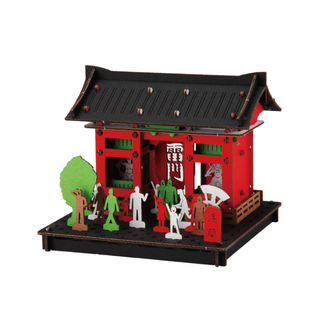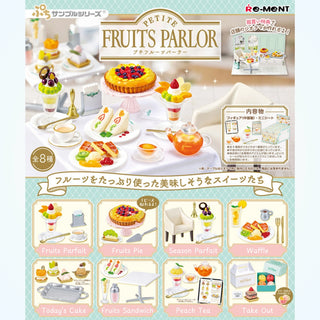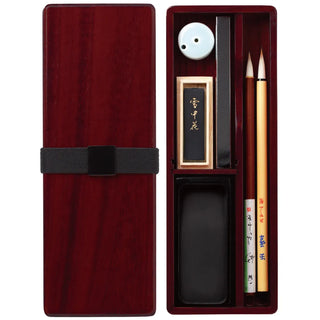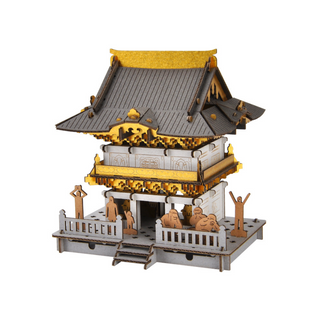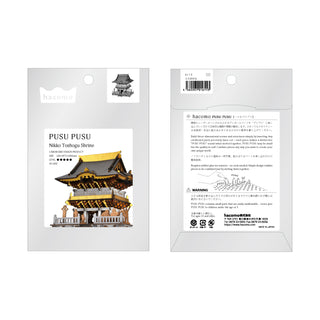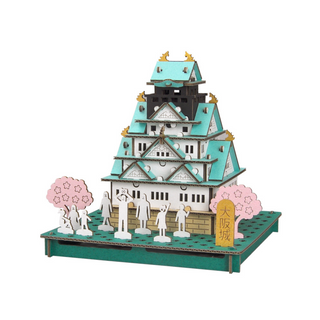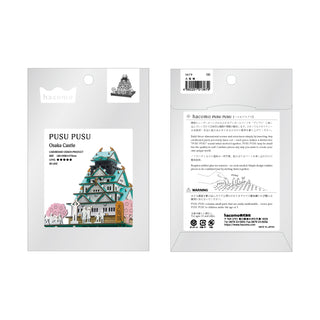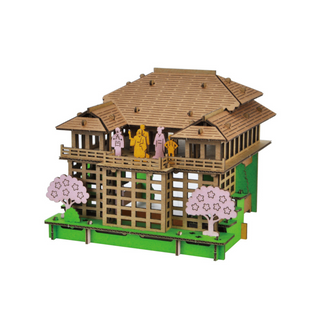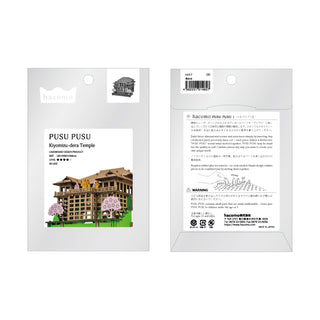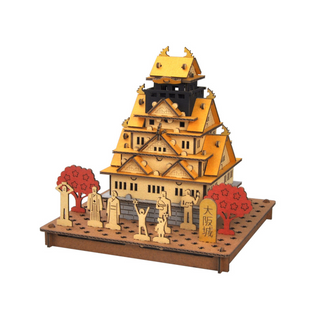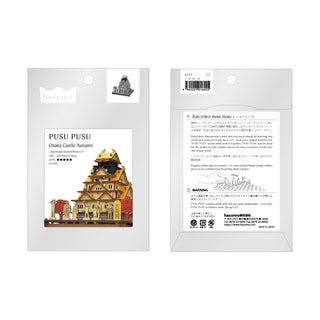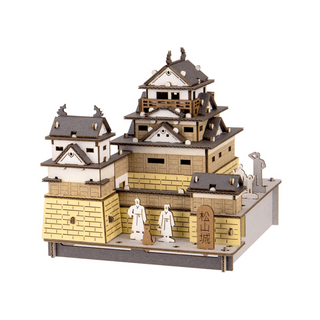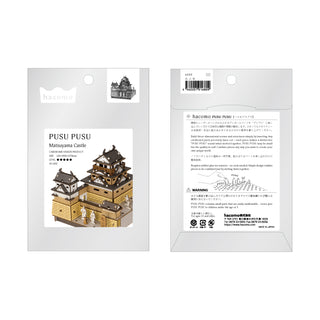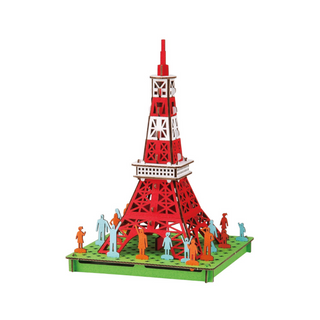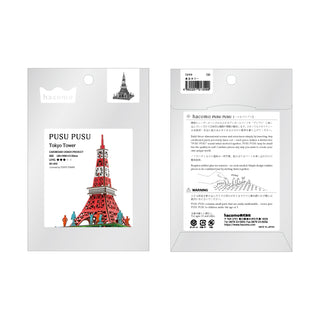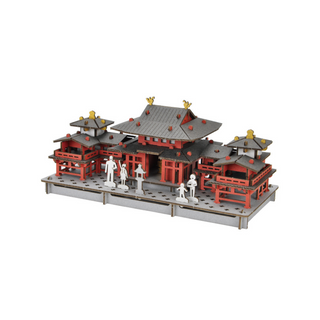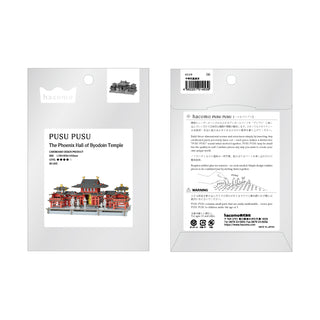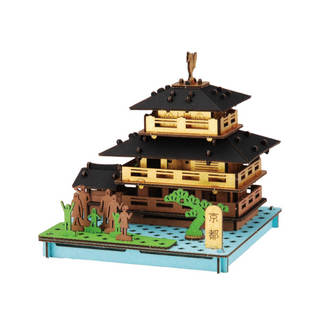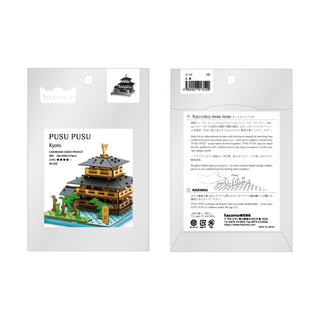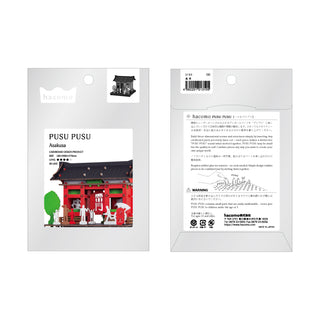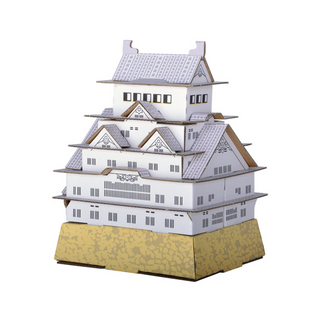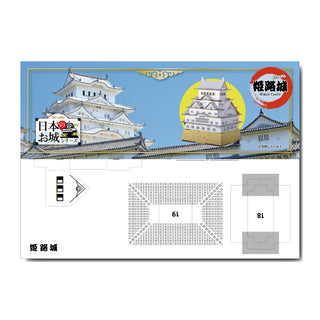In today’s digital age, many leisure activities involve staring at a screen. However, research has increasingly shown that engaging in hands-on activities can have a profoundly positive impact on the brain. Working with your hands can be especially beneficial for those in mentally demanding professions like doctors, analysts, writers, programmers, or anyone who constantly consumes information from the news and social media.
You might not even realize how overloaded your brain is until you give it a break. So, how exactly does working with your hands help? According to experts, many manual tasks require minimal cognitive effort, which allows your mind to unwind. This mental rest not only helps reduce stress, but often leads to creative breakthroughs and clearer problem-solving—benefits that tend to emerge during these “offline” moments of flow.
If you're curious about how hands-on activities can boost your mood and overall well-being, check out this insightful article by Dr. Susan Biali.
One especially delightful way to reap these benefits is through miniature model building, a relaxing pastime that blends mindfulness, craftsmanship, and a dash of creativity. And when it comes to miniature kits with cultural charm and intricate design, few are as satisfying as PUSU PUSU.
These charming, palm-sized DIY models offer the perfect opportunity to disconnect from screens and reconnect with your hands. We carry a wide selection of PUSU PUSU DIY models, and with so many beautiful options, it can be a bit overwhelming to know where to start and which model to choose in our DIY Model Collection. In today’s blog, we’ll guide you through each model that features iconic temples, shrines, and monuments, along with a bit of history and fun facts behind each one.
 Osaka Castle
Osaka Castle
Osaka Castle is one of Japan’s most iconic historical landmarks, located in Osaka Prefecture. Originally constructed in the late 16th century by Toyotomi Hideyoshi—a powerful daimyo and the second “Great Unifier” of Japan—this impressive structure played a central role during the Azuchi-Momoyama period. Hideyoshi, who rose to power after serving under Oda Nobunaga, designed Osaka Castle based on Nobunaga’s own Azuchi Castle, blending military strategy with architectural grandeur.
Spanning approximately 16,000 square meters, Osaka Castle was not just a military stronghold but also a symbol of power and ambition. A fun fact: the castle's foundation features megaliths—massive stones that were transported and assembled using remarkable ingenuity for the time. Some of these stones are among the largest used in Japanese castle construction, showcasing the extraordinary effort that went into building this historic fortress.
We offer two different PUSU PUSU models of Osaka Castle, each capturing the beauty of Japan’s distinct seasons. The PUSU PUSU Osaka Castle showcases the spring scenery, complete with delicate cherry blossoms in full bloom surrounding the castle perfect nod to hanami season. The PUSU PUSU Osaka Castle Autumn captures the warm hues of autumn, with rich oranges and reds coloring both the foliage and the castle, evoking the cozy charm of fall in Japan.
 Matsuyama Castle
Matsuyama Castle
Matsuyama Castle, perched atop Mount Katsuyama in the city of Matsuyama, Ehime Prefecture, was originally constructed in 1603 by Katō Yoshiaki, a general under Toyotomi Hideyoshi. To distinguish it from other similarly named castles, it’s often referred to as Iyo-Matsuyama Castle. Recognized for its historical importance, it was designated a National Historic Site in 1952 and remains one of Japan’s few surviving original castles.
One of the castle’s most intriguing features is the Tonashimon Gate, known as the “doorless gate.” To pass through it, visitors must navigate a series of fortified and hidden entrances, intentionally designed to confuse and slow down attackers. Like Osaka Castle, Matsuyama Castle was built with towering stone walls—some as high as 17 meters—and multiple containment zones, showcasing the strategic brilliance of its defensive design.
The PUSU PUSU Matsuyama Castle model is a wonderful miniature tribute to this historic fortress. From its imposing stone walls to the intricate layout that mirrors its real-life defenses, this DIY model captures the essence of Matsuyama Castle and brings a piece of Japanese history into your hands.
 Himeji Castle
Himeji Castle
The imposing Himeji Castle, also known as the White Heron Castle, is one of Japan’s most treasured landmarks. Perched atop a hill in Himeji City, Hyogo Prefecture, it was originally built in 1333 and later expanded during the Azuchi-Momoyama period. Recognized as a UNESCO World Heritage Site and a National Treasure of Japan, it is considered the finest surviving example of classic Japanese castle architecture.
Nicknamed the White Heron Castle for its elegant, white plastered walls—said to resemble a heron in flight—Himeji Castle is admired not only for its beauty but also for its strategic design. Unlike many castles credited to a single builder, Himeji Castle was the result of contributions by several key historical figures, including Akamatsu Norimura, Toyotomi Hideyoshi, Ikeda Terumasa, and Honda Tadamasa. Over time, each of them added to the complex, shaping it into the majestic structure we see today.
Remarkably, the castle has withstood centuries of history, surviving air raids during World War II and enduring the powerful Great Hanshin Earthquake of 1995—a testament to its resilient construction and cultural significance.
The PUSU PUSU Himeiji Castle and the Himeji Castle DIY model beautifully capture the castle’s iconic pristine white exterior, staying true to its nickname, the White Heron Castle. It’s a charming and satisfying way to bring a piece of Japan’s rich history into your own hands—perfect for display or as a mindful crafting experience.
 Nagoya Castle
Nagoya Castle
As the name suggests, Nagoya Castle is located in the heart of Nagoya City and was originally constructed in 1612 during the Edo period as the seat of the Owari branch of the Tokugawa family. Although the castle suffered severe damage during World War II air raids, it has since been beautifully restored, and today, both the main tower and the Honmaru Palace are open to the public. The Honmaru Palace, originally built as the residence and administrative center of the Owari clan, served Tokugawa Yoshinao, the first feudal lord of Owari and a key figure in the Tokugawa lineage.
The Nagoya Castle DIY model is a charming miniature replica of the castle’s main tower, complete with its iconic blue-green tiled roof and intricate architectural details. One of its standout features is the inclusion of the two golden Shachihoko—mythical sea creatures with the head of a dragon, tiger, or lion and the body of a carp. Traditionally placed on wooden structures prone to fire, Shachihoko were believed to summon rain and protect buildings from flames. The pair, typically one male and one female, sit majestically at either end of the roof ridge, serving as guardian spirits of the castle, just as they have for centuries.
 Mt. Fuji
Mt. Fuji
Mount Fuji is arguably one of Japan’s most iconic and beloved symbols. Standing at 3,776.24 meters, it is the tallest peak in Japan and remains an active stratovolcano, with its last eruption occurring in 1707–1708. In 2013, it was officially recognized as a UNESCO World Cultural Heritage Site, highlighting not just its natural beauty but its deep cultural and spiritual significance.
Often depicted in both traditional woodblock prints and modern media, Mount Fuji is considered one of Japan’s Three Holy Mountains and is believed to be the dwelling place of gods and spirits. It draws millions of visitors each year, not only as a scenic backdrop, but also as a popular hiking destination. If you're considering a climb, be sure to follow the official safety and preparation guidelines available on the Mount Fuji Climbing Official Website.
The PUSU PUSU Mt. Fuji DIY Model is a beautiful homage to this majestic mountain. It captures Mount Fuji in springtime, with delicate cherry blossoms in full bloom at the base and a snow-capped peak that mirrors the mountain’s iconic appearance. It’s a serene and symbolic piece—perfect for those who want to keep a little bit of Japan’s natural beauty on their desk or shelf.
Byodo-in Temple
Located in Uji, one of Japan’s most famous tea regions in Kyoto Prefecture, Byodo-in Temple was originally built in 998 during the Heian period as a rural villa for the high-ranking courtier Minamoto no Shigenobu. After his death, the villa was purchased by the influential Fujiwara no Michinaga, one of the most powerful figures of the Fujiwara clan, who acquired it from Shigenobu’s widow. In 1052, the villa was transformed into a Buddhist temple by Michinaga’s son, Fujiwara no Yorimichi.
Byodo-in is most renowned for its iconic Phoenix Hall (Hōō-dō), also known as the Amida-dō, which has stood for nearly a thousand years. A UNESCO World Heritage Site, the temple is celebrated for its elegant Heian-period architecture, tranquil Japanese gardens, and deeply spiritual atmosphere. One particularly fascinating fact is that Byodo-in’s Phoenix Hall is depicted on the reverse side of Japan’s 10-yen coin, making it one of the most widely recognized temple silhouettes in the country. Today, Byodo-in remains a beloved place of worship and a popular destination for visitors drawn to its beauty and cultural significance.
The PUSU PUSU Byodo-in Temple DIY model is a delicate and intricate tribute to the temple’s iconic Phoenix Hall. Even in miniature form, you can spot the golden statue of Amida Buddha inside—an impressive detail that captures the serene spirit of the original. This charming model offers a beautiful way to bring the peaceful atmosphere of Byōdō-in into your own space, whether as a decorative piece or a meditative building experience.
 Asakusa (feat. Kaminarimon Gate)
Asakusa (feat. Kaminarimon Gate)
The PUSU PUSU Asakusa DIY Model features the iconic Kaminarimon Gate, the outer gate of Sensō-ji Temple, one of Tokyo’s most visited and beloved landmarks. Instantly recognizable by its massive red lantern, the Kaminarimon is flanked by statues of the Shinto gods Raijin (god of thunder) and Fūjin (god of wind), symbolizing protection and divine power. Originally built in 941 AD by the military commander Taira no Kinmasa, the gate was later moved to its current location in 1635, where it’s believed the guardian deities were first enshrined. Though the gate has been destroyed and rebuilt multiple times throughout history, it continues to stand as a powerful symbol of resilience and cultural heritage.
In the PUSU PUSU Asakusa DIY model, the attention to detail is remarkable—you can spot the statues of Fūjin and Raijin on either side of the gate, just like in real life. Fūjin, the god of wind, stands on the east side, while Raijin, the god of thunder, guards the west side. This miniature version captures the energy and character of Asakusa’s most famous landmark in the palm of your hand.
 Kiyomizu Dera
Kiyomizu Dera
Kiyomizu-dera is arguably one of the most iconic and beloved temples in Kyoto, with a history that dates back to 778 AD, during the late Nara period. It was founded by Enchin Shōnin, a priest from Nara, after receiving a divine vision instructing him to build a temple beside the sacred Otowa Spring. Today, Kiyomizu-dera is instantly recognizable for its 12-meter-high wooden stage, which offers sweeping views of Kyoto and the surrounding hills. What makes the structure even more impressive is that it was built entirely without nails, showcasing the incredible skill of traditional Japanese carpentry. Designated as a UNESCO World Heritage Site, the temple is celebrated for both its spiritual significance and architectural beauty.
The PUSU PUSU Kiyomizu-dera DIY model beautifully captures the essence of the temple, especially in springtime, as shown by the charming cherry blossom trees surrounding the structure. Just like the real Kiyomizu-dera, this miniature version is assembled without the use of nails, allowing you to experience a bit of traditional Japanese craftsmanship for yourself in a mindful and creative way.
To find out more about Kiyomizu-dera, check out their official website for more information.
 Kyoto (feat. Kinkaku-ji)
Kyoto (feat. Kinkaku-ji)
Kinkaku-ji, or the Golden Pavilion, is one of Kyoto’s most iconic Zen Buddhist temples. Originally built as a retirement villa for the shogun Ashikaga Yoshimitsu, the structure wasn’t initially covered in gold. The gold leaf was added later and holds deep symbolic meaning—it was intended to purify negative thoughts about death and the impermanence of life. During the Muromachi period, when Kinkaku-ji was constructed, aesthetics and opulence played an important cultural role, and the gleaming gold exterior reflected both spiritual ideals and artistic values. The way the gold catches the sunlight and casts a shimmering reflection on the Kyōko-chi (Mirror Pond) is part of what makes this temple such a breathtaking sight.
The PUSU PUSU Kinkaku-ji DIY model captures this brilliance in miniature form, with the temple’s golden exterior carefully recreated. Just like the real structure, the model is topped with a gilded phoenix, a mythical creature symbolizing rebirth and renewal. It’s a beautiful way to bring a piece of Kyoto’s spiritual and architectural heritage into your home—one golden detail at a time.
 Tokyo Tower
Tokyo Tower
One of the most recognizable symbols of Tokyo, Tokyo Tower is a communications and observation tower located in Minato, Tokyo. Inspired by the Eiffel Tower in Paris, construction began in 1957 and was completed just a year later. On December 23, 1958, the tower officially opened to the public. Standing at 333 meters, it was the tallest structure in Tokyo until the Tokyo Skytree surpassed it in 2012. A fun fact: the tower is painted in white and international orange to comply with aviation safety regulations, giving it a striking appearance that’s become iconic to the Tokyo skyline. Today, Tokyo Tower remains an iconic symbol of Tokyo and a popular tourist attraction. They also continue holding special events throughout the year. To learn more, be sure to visit the Tokyo Tower Official Website.
The PUSU PUSU Tokyo Tower DIY model is a charming and detailed tribute to this beloved landmark. Perfect as a thoughtful gift or a personal keepsake, whether you’ve visited Tokyo before or dream of going one day.
 Nikko Toshogu
Nikko Toshogu
Nikko Toshogu is a richly decorated Shinto shrine located in Nikko, Tochigi Prefecture, and was established in 1617 during the Edo period under the rule of Tokugawa Hidetada. Dedicated to Tokugawa Ieyasu, the founder of the Tokugawa shogunate, it is one of Japan’s most important historical and cultural sites. The shrine is part of the UNESCO World Heritage Site known as the Shrines and Temples of Nikko, with 42 of its structures included in the designation. Known for its intricate carvings, vibrant colors, and elaborate architecture, Nikko Toshogu blends Shinto and Buddhist elements in a uniquely ornate style.
The PUSU PUSU Nikko Toshogu DIY model highlights perhaps the most iconic structure within the shrine complex—the Yōmeimon Gate. Said to be adorned with approximately 240,000 sheets of gold leaf, it even surpasses Kyoto’s Kinkaku-ji in gilded splendor. The gate is affectionately called "Higurashi-no-mon" (日暮の門), which directly translates to From-morning-to-evening Gate, because it’s so mesmerizing that one could gaze at it from morning to night without growing tired.
Conclusion
Whew—you made it to the end! That was quite the tour through some of Japan’s most breathtaking landmarks in miniature form! We hope you not only learned something new about these iconic architectural wonders but also gained a deeper appreciation for the craftsmanship, culture, and stories behind each one. From towering castles to tranquil temples, each PUSU PUSU model is more than just a pretty display—it’s a gateway to Japan’s rich history and a hands-on way to reconnect with your creative side.
So if you’ve been feeling a little screen-fatigued or just want a fun new hobby, why not give PUSU PUSU a try? It’s calming, mindful, and incredibly satisfying to build something beautiful with your own two hands.




